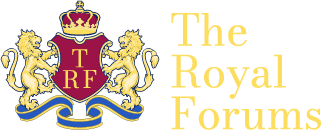To my slight disappointment BB does not write more about the new book with QMII than what she has been saying about Mary.
And she is indeed praising Mary very much!
However, that has already been covered by Roskilde in another thread.

Instead I will focus on the work QMII did on the antependium for the church in Wittenberg.
Now, I know next to nothing about embroidery, so bear with me. And you can enjoy the photos of QMII in the creative process here:
https://app.box.com/s/sf65twel16vfls6xi5piua5lak90grd0
And BB from last week, for those interested:
https://app.box.com/s/ymlmvegeqqltph0st43w9lwjsx02tc5p
Summary of interview in Billed Bladet #43, 2016.
Interviewer: Trine Larsen.
QMII was approached almost two years ago and asked whether she would create a new antepedium on the occasion of the 500th anniversary of the Reformation in Wittenberg. (The Reformation in DK took place in the mid 1530's).
Initially QMII was hestitant and pondered the request for some time. in fact she had never been to Wittenberg, so she went to have a look around and to meet the people associated with the church.
Then she started. First by drawing the patters and then by sewing and every single stitch is done by QMII - and that's a lot of stitches! Because she used what is known a petitpoint, which is smaller than "normal" stitches in embroideries.
Her work consists of two borders with a motif of flames with Luther-rose in the center and these were added to the cloth that constitute the basis for the antependium.
Each border measure 120 x 32 centimeters. And the rose measure 35 x 40 centimeter.
The flames refer to the Holy Spirit as well as well as Luther's passionate personality.
The rose itself is very much a Lutheran symbol with the cross being a symbol of the faith in the crucified Christ. The heart symbolize life and love, while the white rose symbolize joy and peace.
So QMII has put in hundreds of hours of work and despite the occasional "You must be nuts" (to undertake this), she was most of the time deeply caught up with her work and actually had problems getting away from sewing.
But Why QMII?
This is QMII's first antependium to a foreign church. And she explains that the ideas of the Reformation spread north to DK and by 1526 the ideas had reached Schleswig Holstein. By then the later Christian III was duke there. Haderslev was the first town in the Danish realm where the Reformation was officially introduced so to speak. Haderslev is located in what is now Southern Jutland.
But it was only when Christian III became king that the Reformation was officially introduced in Denmark. In 1536, officially. - In the middle of a vicious civil war by the way. Which was not about religion but politics.
Anyway, a number of years ago QMII did some work for the catherdral in Haderslev, so hence the connection between Haderslev/Denmark and Wittenberg.
Apart from the antependium having to be red, QMII was given free reins and she used different nuances of red to create a sense of depth in the embroidery.
- I understand the locals are pretty pleased with the result!
As a Dane I can't help feeling proud of the way the Reformation was introduced in Denmark.
DK had always been more or less autonomous from Rome - being so far away. In fact there is a very amusing story about a representative from Rome coming here in the late medieval period.

I'll tell you about it you wish.
The Reformation was introduced from the top down, quietly and in good order.
There was no religious persecution. No burning ad destruction of cloisters and churches. No killing or abuse of priests and monks. And in the very few cases it did happened it was treated as a criminal offense.
The religious orders were told that this was the end and many if not most decided to pack up. Others were told to vacate the premises by this and that date, then the crown would take over.
But several cloisters and abbeys remained and continued as they always had. They were simply informed that there would be no new members admitted to whatever order they belonged to and by the time the last monk or nun died, the place would go to the crown. That often took several decades!
It wasn't so much religious tolerance, but more an example of a small population where everybody more or less knew everybody else. And many of those who lived in the monastic houses were younger sons and daughters of the nobility and no one wanted to harm relatives, so they were simply allowed to live on.
An unexpected by-product of the Reformation was that the state, i.e. the crown, had to set up a system of hospitals, schools and poor houses and other kinds of welfare initiatives that had otherwise been covered by the Catholic church.
So in contrast to most other places in Europe the Reformation in DK was a peaceful affair.



 I hope you'll be back, Gerry.
I hope you'll be back, Gerry.